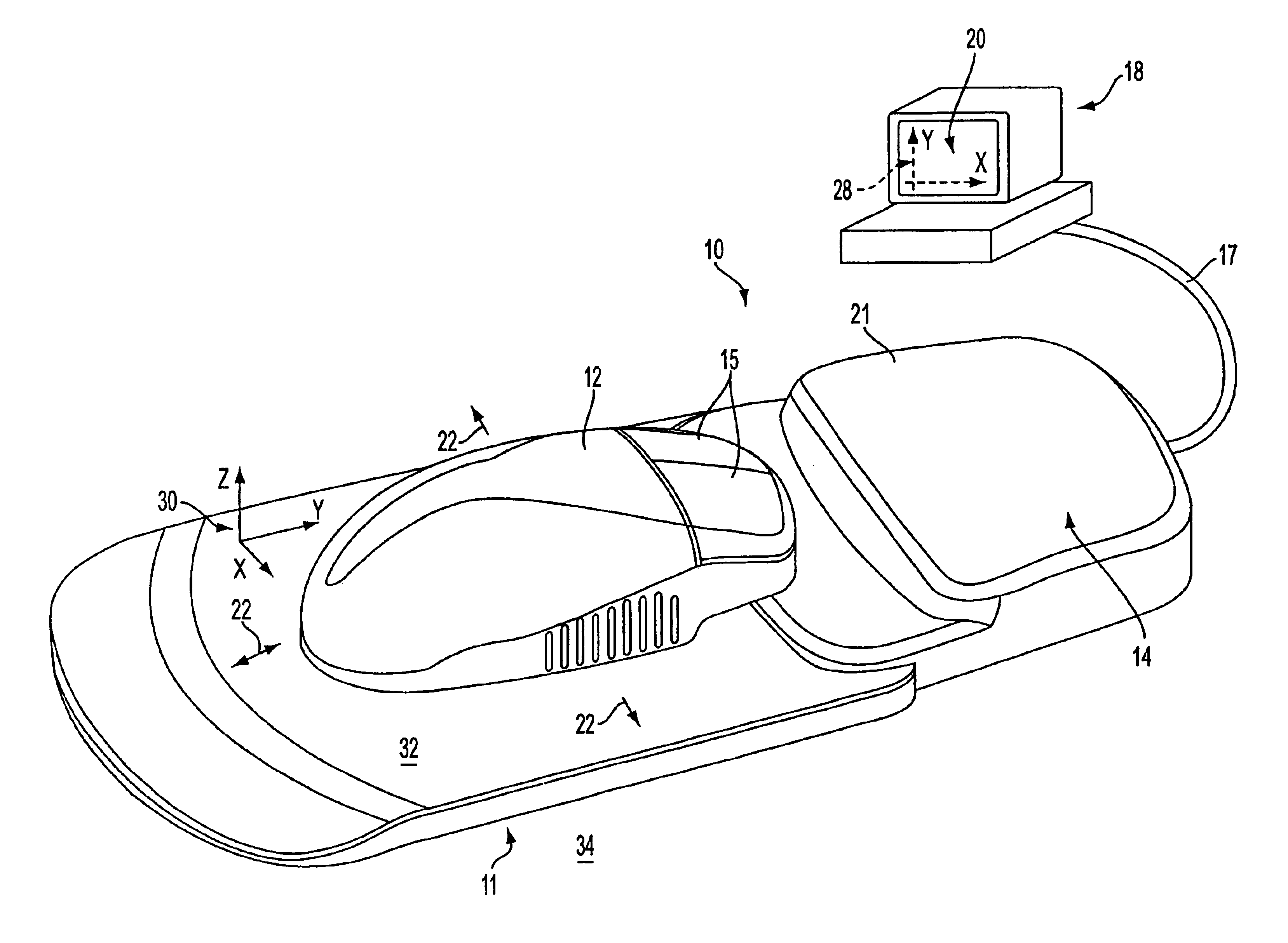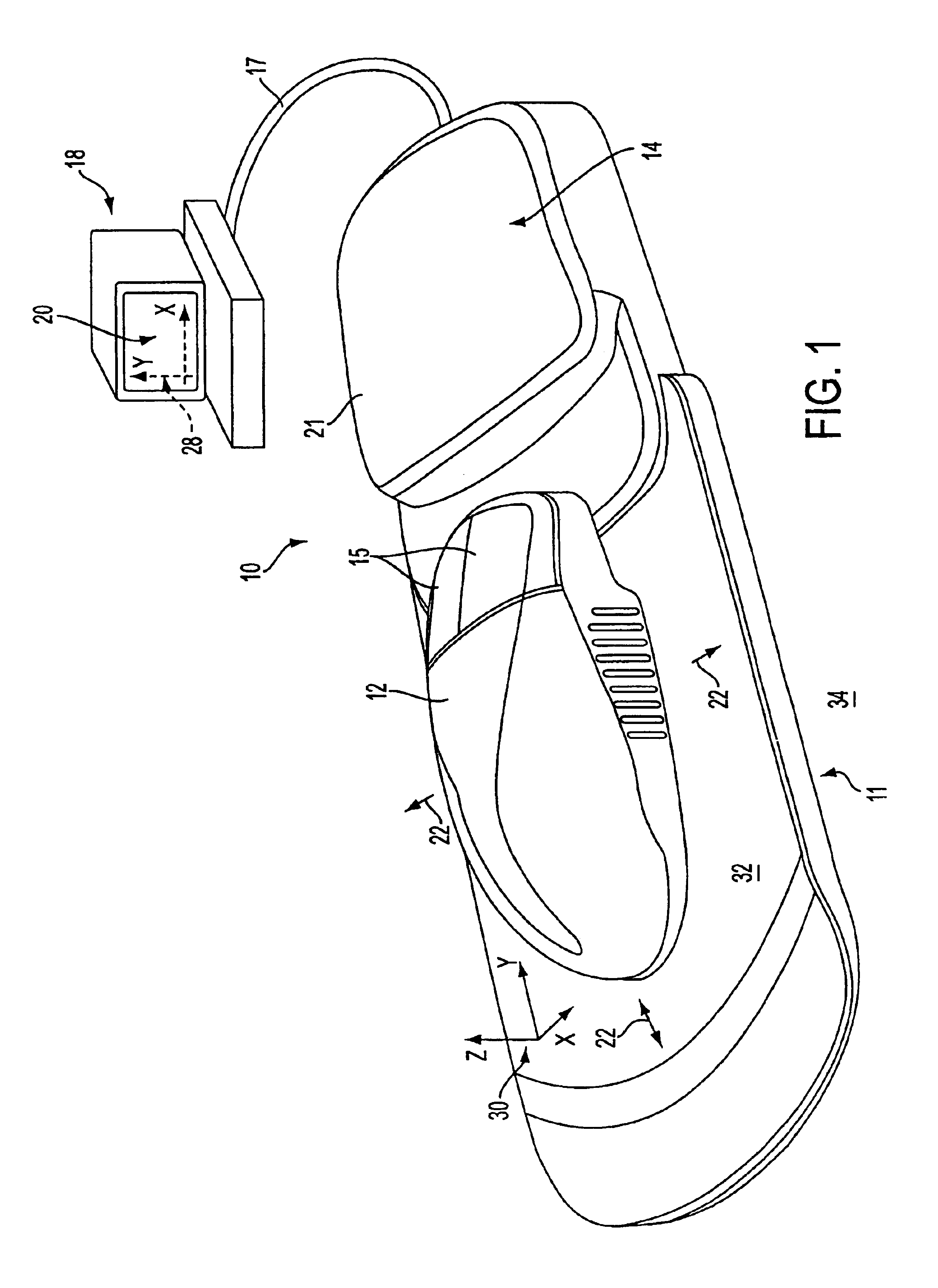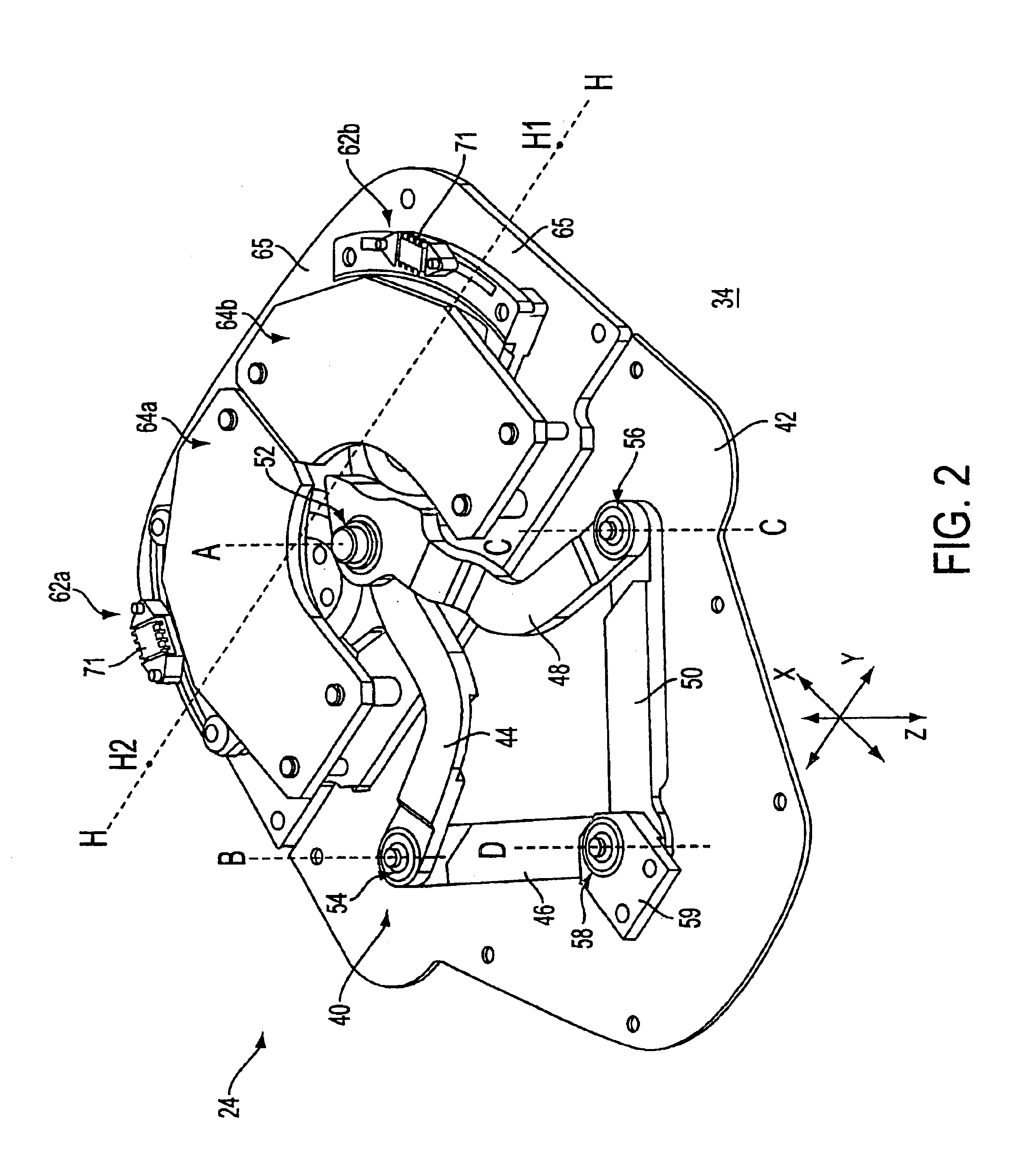Force effects for object types in a graphical user interface
- Summary
- Abstract
- Description
- Claims
- Application Information
AI Technical Summary
Benefits of technology
Problems solved by technology
Method used
Image
Examples
embodiment 290
[0185]FIG. 9 is a block diagram illustrating a first, preferred embodiment 290 of the present invention. In this embodiment, both relative and absolute position reporting modes are used. As referred to herein, relative position reporting means that the force feedback device reports only changes in position of the user object 12 to the host computer, i.e. a difference between a new position and the last reported position, while absolute position reporting means that absolute coordinates are reported to the host from which the host can directly display the cursor or other graphical object. Most force feedback controllers use absolute position reporting since the position of the cursor on the screen must be known to implement forces. For example, the force feedback mouse and other interface devices described in U.S. Pat. Nos. 6,219,032, 5,825,308, and 6,100,874 use absolute position reporting.
[0186]One problem with absolute position reporting is that the host computer cannot detect the...
embodiment 400
[0217]Embodiment 400 provides a device delta position to the host computer from which the host computer determines a cursor screen pixel position. The host computer sends cursor position updates to the force feedback device to provide the cursor position which the device needs to determine when forces are output and to determine the force characteristics. However, since the host cursor position updates occur at a much slower rate, the device must model the cursor position on its own to be able to output forces between host cursor updates. Thus, the host sends ballistic parameters and screen size information so the device can model the cursor position. When the device receives an update, it corrects for any error between its modelled position and the actual cursor position, as detailed below. The host also sends force feedback commands to the device indicate which forces are to be output.
[0218]FIG. 13 illustrates a process 410 for implementing the second embodiment 400 of FIG. 12. A ...
PUM
 Login to View More
Login to View More Abstract
Description
Claims
Application Information
 Login to View More
Login to View More - R&D
- Intellectual Property
- Life Sciences
- Materials
- Tech Scout
- Unparalleled Data Quality
- Higher Quality Content
- 60% Fewer Hallucinations
Browse by: Latest US Patents, China's latest patents, Technical Efficacy Thesaurus, Application Domain, Technology Topic, Popular Technical Reports.
© 2025 PatSnap. All rights reserved.Legal|Privacy policy|Modern Slavery Act Transparency Statement|Sitemap|About US| Contact US: help@patsnap.com



